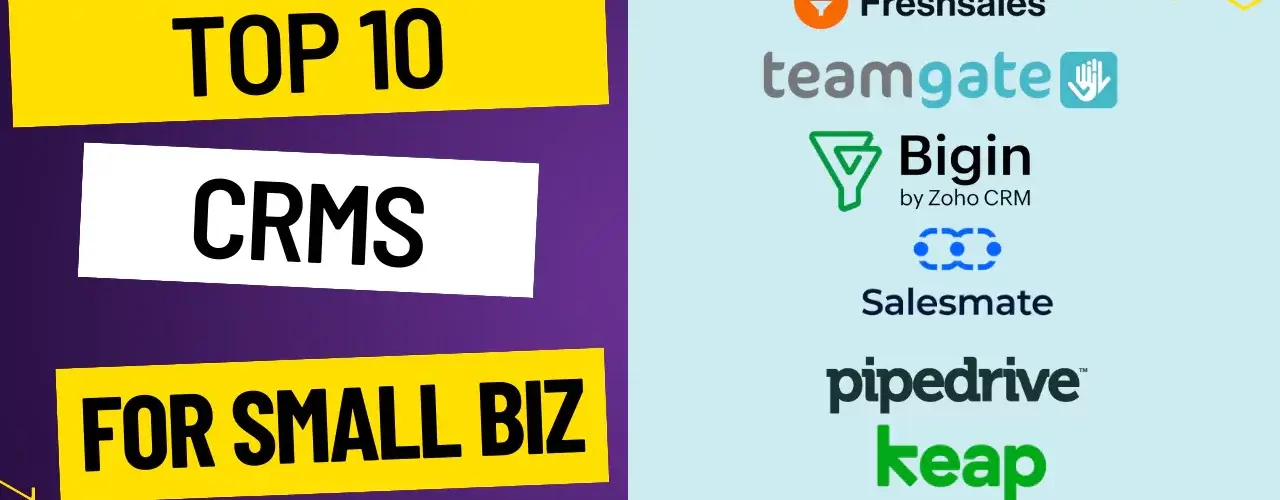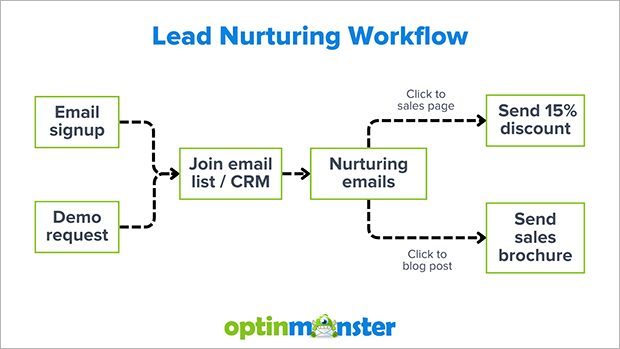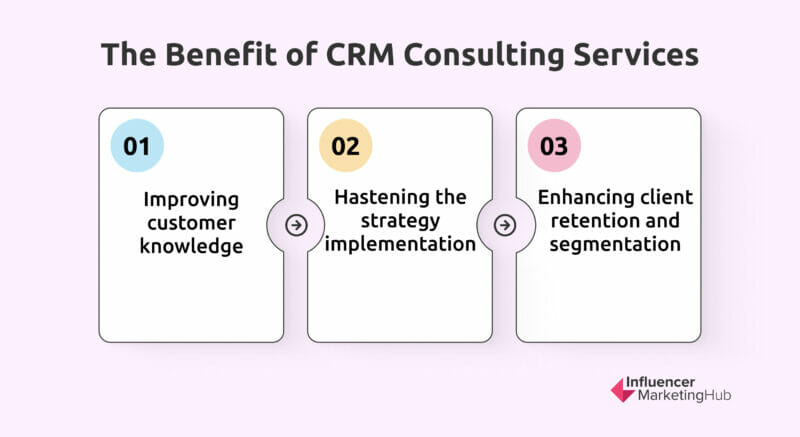CRM Marketing Segmentation: Unlock Hyper-Personalization and Drive Exponential Growth

In the ever-evolving landscape of digital marketing, the ability to connect with your audience on a personal level is no longer a luxury—it’s a necessity. Consumers are bombarded with information daily, and they’re becoming increasingly adept at filtering out generic, irrelevant messages. This is where Customer Relationship Management (CRM) marketing segmentation steps in, acting as a powerful tool to transform your marketing efforts from scattershot campaigns to laser-focused strategies that resonate with individual customer needs and preferences.
This comprehensive guide will delve deep into the world of CRM marketing segmentation, exploring its core principles, practical applications, and the immense benefits it offers to businesses of all sizes. We’ll unpack the ‘why’ behind segmentation, the ‘how’ of implementation, and the ‘what’ of achieving significant results. Get ready to discover how CRM marketing segmentation can revolutionize your approach to customer engagement, boost your ROI, and ultimately, drive exponential growth for your business.
Understanding the Fundamentals of CRM Marketing Segmentation
At its heart, CRM marketing segmentation is the practice of dividing your customer base into distinct groups, or segments, based on shared characteristics. These characteristics can range from demographics and behaviors to psychographics and purchase history. The goal is to create segments that are homogeneous within themselves (meaning members of the same segment share similar traits) and heterogeneous between each other (meaning different segments have distinct profiles). This allows you to tailor your marketing messages, products, and services to the specific needs and preferences of each segment.
Think of it like this: you wouldn’t send the same email to a teenager as you would to a retiree. Their interests, needs, and communication preferences are vastly different. Segmentation allows you to acknowledge these differences and craft personalized experiences that are far more likely to capture their attention and drive conversion.
Why is CRM Marketing Segmentation Important?
The advantages of CRM marketing segmentation are numerous and far-reaching. Here are some of the key benefits:
- Improved Targeting: By understanding your customers’ unique characteristics, you can target your marketing efforts more precisely, ensuring your messages reach the right people at the right time.
- Increased Engagement: Personalized messaging and offers resonate more deeply with customers, leading to higher engagement rates and stronger customer relationships.
- Enhanced Conversion Rates: When you speak directly to your customers’ needs, you’re more likely to drive conversions and generate sales.
- Reduced Marketing Costs: By focusing your efforts on the most promising segments, you can avoid wasting resources on irrelevant campaigns.
- Greater Customer Loyalty: When customers feel understood and valued, they’re more likely to remain loyal to your brand.
- Better Product Development: Segmentation provides valuable insights into customer needs and preferences, informing product development and innovation.
In essence, CRM marketing segmentation is the cornerstone of customer-centric marketing. It allows you to move away from a ‘one-size-fits-all’ approach and embrace a strategy that prioritizes individual customer experiences.
Key Principles of Effective CRM Marketing Segmentation
Successful CRM marketing segmentation is not simply about dividing your customer base into arbitrary groups. It requires a strategic approach that is guided by specific principles. Here are some of the most important:
1. Define Clear Objectives
Before you begin segmenting, you need to define your goals. What do you hope to achieve through segmentation? Are you looking to increase sales, improve customer retention, or launch a new product? Your objectives will guide your segmentation strategy and help you determine which criteria are most relevant.
2. Choose Relevant Segmentation Criteria
The criteria you use to segment your customer base will depend on your business, your industry, and your objectives. Common segmentation criteria include:
- Demographics: Age, gender, income, education, occupation, marital status, etc.
- Geographics: Location (country, region, city), climate, urban/rural, etc.
- Psychographics: Lifestyle, values, interests, attitudes, personality traits, etc.
- Behavioral: Purchase history, website activity, product usage, brand loyalty, engagement levels, etc.
- Needs-based: The specific needs and problems that customers are trying to solve.
It’s important to choose criteria that are relevant to your objectives and that provide meaningful insights into your customers’ behavior. Consider using a combination of criteria for a more comprehensive understanding.
3. Ensure Measurability
Your segments should be measurable, meaning you can track their size, behavior, and performance. This allows you to evaluate the effectiveness of your segmentation strategy and make adjustments as needed. Use metrics like conversion rates, customer lifetime value, and churn rates to measure the success of each segment.
4. Prioritize Accessibility
Your segments should be accessible, meaning you can reach them with your marketing messages. This requires having the necessary data and the channels to communicate with each segment effectively. Consider your budget and resources when choosing segmentation criteria and communication channels.
5. Focus on Actionability
Your segments should be actionable, meaning you can develop specific marketing strategies and tactics for each one. This requires having a deep understanding of each segment’s needs, preferences, and behaviors. Your segmentation strategy should inform your product development, pricing, promotion, and distribution strategies.
6. Maintain Stability
While customer behavior can change over time, aim for segments that are relatively stable. Avoid creating segments that are too narrow or based on fleeting trends. Regularly review and update your segments to ensure they remain relevant and effective.
Implementing CRM Marketing Segmentation: A Step-by-Step Guide
Now that you understand the principles, let’s walk through the process of implementing CRM marketing segmentation:
Step 1: Data Collection and Analysis
The foundation of any successful segmentation strategy is data. Gather as much relevant data as possible about your customers. This includes data from your CRM system, website analytics, social media platforms, and any other sources. Analyze your data to identify patterns, trends, and insights that can inform your segmentation strategy. Look for commonalities in demographics, behaviors, and preferences.
Step 2: Segment Creation
Based on your data analysis, define your segments. Start with a small number of segments and gradually add more as needed. Choose segmentation criteria that are relevant to your objectives and that provide meaningful insights into your customers’ behavior. Give each segment a descriptive name that reflects its key characteristics.
Step 3: Segment Profiling
Create detailed profiles for each segment. Include information about their demographics, psychographics, behaviors, and needs. Develop a deep understanding of each segment’s motivations, pain points, and aspirations. This will help you tailor your marketing messages and offers to their specific needs.
Step 4: Strategy Development
Develop specific marketing strategies and tactics for each segment. This includes defining your target audience, crafting personalized messaging, choosing the right communication channels, and creating relevant offers. Consider your product development, pricing, promotion, and distribution strategies for each segment.
Step 5: Implementation and Execution
Implement your segmentation strategy across your marketing channels. This includes updating your email marketing campaigns, website content, social media ads, and any other relevant touchpoints. Ensure that your marketing messages are personalized and relevant to each segment. Use A/B testing to optimize your campaigns and improve results.
Step 6: Monitoring and Evaluation
Track the performance of each segment using relevant metrics, such as conversion rates, customer lifetime value, and churn rates. Analyze your data regularly to evaluate the effectiveness of your segmentation strategy. Make adjustments as needed to optimize your campaigns and improve results. Continuously refine your approach based on the insights you gain.
Tools and Technologies for CRM Marketing Segmentation
Several tools and technologies can help you implement and manage your CRM marketing segmentation strategy:
- CRM Systems: Salesforce, HubSpot, Zoho CRM, and Microsoft Dynamics 365 are examples of CRM systems that provide robust segmentation capabilities.
- Marketing Automation Platforms: Platforms like Marketo, Pardot, and ActiveCampaign allow you to automate your marketing campaigns and personalize your messaging based on customer segments.
- Email Marketing Platforms: Mailchimp, Constant Contact, and Sendinblue offer segmentation features that allow you to send targeted email campaigns to specific customer groups.
- Data Analytics Tools: Google Analytics, Adobe Analytics, and Tableau can help you analyze your customer data and identify patterns and trends that can inform your segmentation strategy.
- Customer Data Platforms (CDPs): CDPs like Segment and Tealium collect and unify customer data from multiple sources, providing a 360-degree view of your customers and enabling more sophisticated segmentation.
The best tools for you will depend on your budget, your technical expertise, and the specific needs of your business. Consider the features, scalability, and integrations offered by each platform before making a decision.
Examples of CRM Marketing Segmentation in Action
Let’s look at some real-world examples of how businesses are using CRM marketing segmentation to achieve impressive results:
Example 1: E-commerce Retailer
An e-commerce retailer segments its customers based on purchase history, website activity, and demographics. They identify segments such as:
- High-Value Customers: Customers who have made frequent purchases and have a high average order value. They receive exclusive offers, early access to sales, and personalized recommendations.
- New Customers: Customers who have recently made their first purchase. They receive welcome emails, onboarding guides, and product recommendations based on their initial purchase.
- Lapsed Customers: Customers who haven’t made a purchase in a while. They receive re-engagement emails with special offers and reminders about their past purchases.
- Browsers: Customers who have viewed specific products on the website but haven’t made a purchase. They receive retargeting ads and personalized product recommendations based on their browsing history.
By tailoring their marketing efforts to each segment, the retailer sees a significant increase in sales, customer retention, and customer lifetime value.
Example 2: SaaS Company
A SaaS company segments its customers based on their usage of the product, their subscription plan, and their industry. They identify segments such as:
- Free Trial Users: Users who are currently on a free trial. They receive onboarding emails, product tutorials, and special offers to encourage them to upgrade to a paid plan.
- Basic Plan Users: Users on the basic plan. They receive upgrade offers, tips on how to get more value from the product, and information about new features.
- Enterprise Plan Users: Users on the enterprise plan. They receive dedicated support, account management, and invitations to exclusive events.
- Churn Risk Users: Users who are showing signs of churn, such as declining usage or negative feedback. They receive proactive outreach, customer support, and special offers to prevent them from canceling their subscription.
By tailoring their marketing efforts to each segment, the SaaS company reduces churn, increases customer lifetime value, and drives revenue growth.
Example 3: Financial Services Provider
A financial services provider segments its customers based on their financial goals, income level, and risk tolerance. They identify segments such as:
- Retirement Savers: Customers who are saving for retirement. They receive information about retirement planning, investment options, and financial advice.
- First-Time Homebuyers: Customers who are looking to buy their first home. They receive information about mortgages, down payments, and homeownership.
- High-Net-Worth Individuals: Customers with high net worth. They receive personalized financial planning, investment management, and estate planning services.
- Debt Management Customers: Customers who are struggling with debt. They receive information about debt consolidation, credit counseling, and financial education.
By tailoring their marketing efforts to each segment, the financial services provider increases customer satisfaction, builds trust, and drives sales of financial products and services.
Common Mistakes to Avoid in CRM Marketing Segmentation
While CRM marketing segmentation offers immense benefits, it’s important to be aware of common pitfalls that can undermine your efforts:
- Over-Segmentation: Creating too many segments can lead to inefficient marketing efforts and a diluted message. Focus on a manageable number of segments that are truly distinct and actionable.
- Under-Segmentation: Failing to segment your customer base at all, or using overly broad segments, can result in generic messaging that doesn’t resonate with your audience.
- Using Irrelevant Criteria: Choosing segmentation criteria that are not related to your objectives or that don’t provide meaningful insights into your customers’ behavior.
- Neglecting Data Quality: Relying on inaccurate or incomplete data can lead to flawed segmentation and ineffective marketing campaigns.
- Failing to Personalize: Creating segments is only the first step. You must personalize your marketing messages and offers to each segment to achieve the desired results.
- Ignoring Customer Feedback: Failing to listen to customer feedback and adapt your segmentation strategy accordingly.
- Not Analyzing Results: Neglecting to track the performance of each segment and make adjustments based on the insights you gain.
By avoiding these common mistakes, you can maximize the effectiveness of your CRM marketing segmentation strategy.
The Future of CRM Marketing Segmentation
CRM marketing segmentation is constantly evolving, driven by advances in technology, changes in consumer behavior, and the increasing availability of data. Here are some trends to watch:
- Hyper-Personalization: The ability to deliver highly personalized experiences to individual customers, based on their unique needs and preferences. This is made possible by advancements in AI and machine learning.
- Predictive Segmentation: Using data analytics and machine learning to predict customer behavior and segment customers proactively.
- Real-Time Segmentation: Segmenting customers in real-time based on their current behavior and context.
- Cross-Channel Personalization: Delivering consistent and personalized experiences across all marketing channels, including email, website, social media, and mobile.
- Privacy-Focused Segmentation: Addressing growing concerns about data privacy and complying with regulations like GDPR and CCPA.
As these trends continue to develop, CRM marketing segmentation will become even more sophisticated and effective. Businesses that embrace these changes will be well-positioned to thrive in the future.
Conclusion: Unleashing the Power of CRM Marketing Segmentation
CRM marketing segmentation is a powerful tool that can transform your marketing efforts and drive significant results. By dividing your customer base into distinct segments, you can tailor your marketing messages, products, and services to the specific needs and preferences of each group. This leads to improved targeting, increased engagement, enhanced conversion rates, and greater customer loyalty.
Implementing a successful CRM marketing segmentation strategy requires careful planning, data analysis, and a commitment to personalization. By following the principles outlined in this guide, you can create a strategy that is tailored to your specific business needs and that drives exponential growth.
Embrace the power of CRM marketing segmentation and unlock the potential to build stronger customer relationships, boost your ROI, and achieve lasting success. The future of marketing is personalized – and it starts with segmentation.





